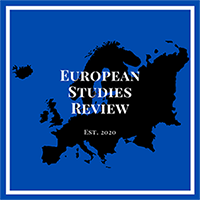By Federica Attianese
The “invisible shipwreck”
The new year opened with a new tragedy in the Mediterranean, highlighting the increasingly urgent challenges that the European Union is called upon to confront in the area of migration. On January 13, news broke of the disappearance of two vessels on the central Mediterranean migration route, resulting in another episode of an “invisible shipwreck“, following the one that occurred on December 16. The presumed victims would add to a long list that, according to the Missing Migrants report by International Organisation for Migration (IOM), counts approximately 26,000 people who have died or disappeared while trying to cross the Mediterranean Sea between 2014 and the present day. Almost 80% of these occurred in the central Mediterranean, precisely on the route between Libya, Tunisia and Italy. Additionally, according to data provided by FRONTEX, the European border and coast guard agency, in 2023 alone, about 380,000 migrants and refugees arrived in European Union countries through irregular channels, marking a 17% increase from the previous year.
The Ambitious EU Asylum and Migration Pact
In the meantime, the EU is faced with the broader task of implementing the long-awaited asylum reforms. The EU Asylum and Migration Pact was initially developed in response to longstanding challenges and shortcomings in the European Union’s asylum and migration policies. In particular, the Pact aims to address the disparities in asylum procedures and reception conditions among EU member states and the lack of a unified approach to managing migration flows, by providing a comprehensive framework for reforming the EU’s asylum and migration policies, improving their efficiency and effectiveness, and enhancing solidarity and responsibility-sharing.
In mid-December, the European Parliament and the Council reached a symbolic agreement on a comprehensive reform of the European asylum and migration policy. The new legislation involves stricter procedures, which include the creation of standardised procedures for identifying non-EU nationals upon arrival, the development of a common database to track unauthorised movements (EURODAC), and streamlining asylum procedures and border management. Additionally, the pact aims to address the disproportionate burden faced by certain countries, such as Italy, in managing asylum applications. It also includes provisions to prepare for future crises and unforeseen circumstances.
An Agreement Not Without Criticism
It is evident that the path towards concluding the New Pact on Migration and Asylum has been marked by the fear of a new refugee crisis, a theme that has haunted the Union since the 2015 European refugee crisis. What emerges at the moment is undoubtedly a sense of urgency, as there is no intention at the European level to face the parliamentary elections without demonstrating unity on the issue. Besides, the lack of an agreement could fuel the Eurosceptic and far-right narrative about the alleged inability of European governments to respond to migration challenges.
However, the EU’s migration diplomacy, exemplified by the agreements with Tunisia (Memorandum of Understanding), Turkey (EU-Turkey Statement), and Libya (Memorandum of Understanding), remains a crucial aspect of migration management. Such agreements have already raised concerns among several international human rights organisations, such as Amnesty, suggesting that the new pact could lead to arbitrary detention, racial profiling, and repatriation to countries where migrants may be at risk of torture or imprisonment.
Prospects for the EU Elections
What has to be expected then? Final formal approval by Parliament is expected by April. Meanwhile, EU member states’ representatives approved the provisional deal that was reached between the Council presidency and the Parliament last December, confirming their commitment to improve the European asylum and migration system.
With the European Parliament elections looming in June, migration is destined to be a key issue. While some hope that the new asylum rules may mitigate the expected rise of right-wing populists, experts express scepticism, emphasising that the reality is that irregular migration towards Europe will continue. Despite the controversies, the agreement signals a political accomplishment, showcasing the EU’s capacity for collective action and compromise on contentious issues.
About the Author
Federica Attianese is an Italian recent Master’s graduate in Global Studies & EU at the University of Salerno, and is currently volunteering as a Development and Policy Officer at EasySustainability NGO. Attianese holds a Bachelor’s degree in Political Science and International Relations from the University of Salerno, and enhanced her international exposure with two exchange programs, at the University of Granada (Spain) and the University of Bucharest (Romania).

